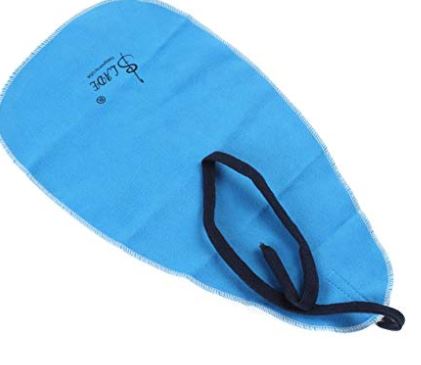The basic principles involved in cleaning flutes, clarinets and saxophones are very similar.
Perhaps the first thing to note is that, unlike brass instruments, the body of woodwind instruments must never be immersed in water. You can rinse the mouthpieces of clarinets and saxophones using warm water, but only after the ligature and the reed have been removed. Any calcium deposits should be removed using a cotton bud soaked in vinegar or rubbing alcohol (or isopropyl alcohol). Do not use soap or hot water. Doing this risks breaking down the protective coating on the mouthpiece and changing its colour. It might also distort the tone.
Reeds are usually a bit wet after the instrument has been played. After taking the reed off, some players therefore like wipe it with a cloth then place it on a smooth, dry surface (with the flat side facing upwards) for a couple of minutes to allow it to dry further before putting it back in its case.
The internal tubing of all woodwind instruments should be wiped after each playing session using a swab cloth (see below). Failure to clear the moisture from the inside of flutes, clarinets and saxophones can lead to the pads becoming wet and expanding. Such pads will not sit well over the tone holes and the instrument will therefore not play properly.

Most swabs are made of cotton or silk. Microfibre cloth can also be used. In the case of clarinets and saxophones the swabs are attached to a string, usually with a little weight on the end. Disassemble the clarinet and swab each section one by one. This is done by inserting the string and the weight in the tubing and pulling the swab out from the other end. The body and the head joint of saxophones can also be cleaned separately. In this case, place the swab in the larger section and pull it though. Clarinet mouthpieces are generally too small for this. Forcing the swab through can therefore damage them. Instead, wrap the swab around your finger and wipe out what you can reach. Flutes usually come with a metal or plastic rod for cleaning. Wrap a strip of cloth around this rod, making sure that the end is covered completely, and then swab each section.
To avoid sticky pads, do not eat anything or consume candy before playing. If the pads become sticky, you may be able to clean them by placing a piece of absorbent paper, such as the paper used for camera lenses, under the pads. Close the key and then pull the paper through gently.
In the case of clarinets and saxophones, you can apply a small amount of cork grease to the tenon cork. Do not use vaseline or petroleum jelly. Never put cork grease on the joints of flutes. Instead, wipe them with a clean cloth. You may also clean them using a little alcohol.
Wipe the outside of flutes, clarinets and saxophones with a clean dry cloth to remove any oil or fingerprints from the body or the keys. This is especially important for lacquer coated saxophones. A small, dry and clean paint brush can be used to remove any lint and other loose material. Tone holes should be cleaned using cotton buds soaked in rubbing alcohol (see picture below). This will help remove dirt and destroy any germs. Mouthpieces, including the embouchure holes of flutes, can be cleaned in a similar way.

High grade key oil can be applied to friction points of the mechanisms once or twice a year. But use the oil sparingly, being careful not to allow the oil to reach the pads.
While cleaning, it is a good idea to check the screws and pivots to see if they are coming loose. If they are, it is not advisable to allow inexperienced players to try to tighten them. This is because of the sensitive adjustments that have to be made. (screws that are tightened too much can create playing problems). A teacher may be able to help. Alternatively, the instrument should be taken to a repair shop.
Always remember that there are numerous parts of a woodwind instrument that can bend or be easily damaged. Therefore, always handle your flute, clarinet or saxophone with care.